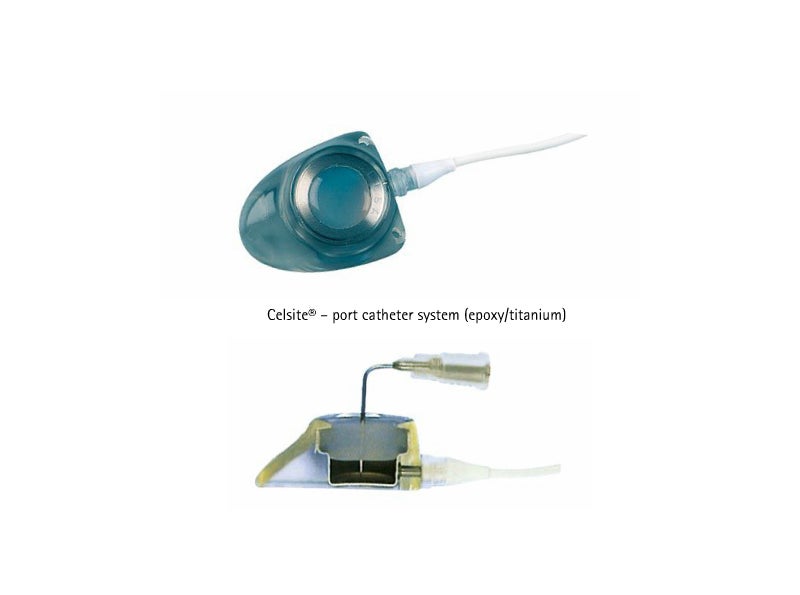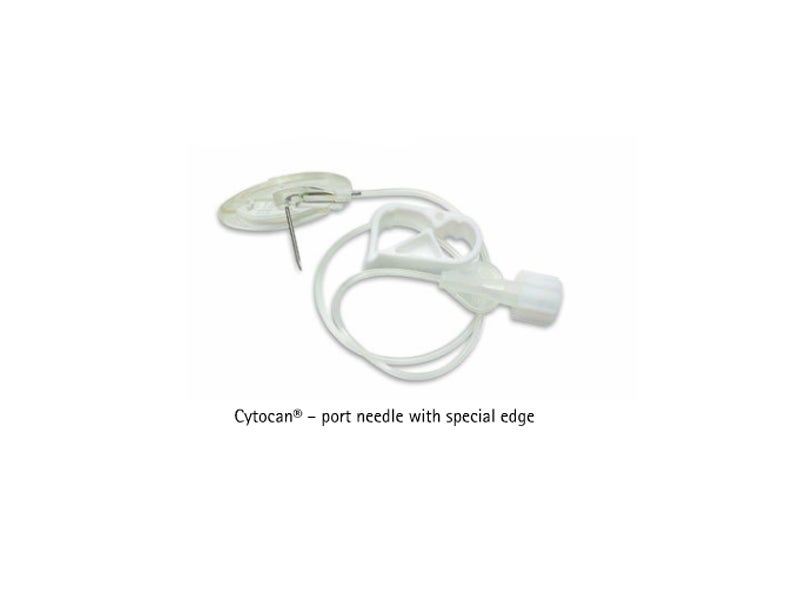Due to the fact that port catheter systems are widely in use, it is sensible to describe what the system comprises in detail.
What is a port system?
An implanted port catheter system is a catheter system that is implanted into an obtrusive and easily accessible area of the body under the skin e.g. the chest area. It mainly comprises of two component parts – the port chamber and the port catheter. The port chamber (usually made out of titanium) is surrounded by plastic housing and is completely closed off via a silicone membrane at the top.
This membrane serves as the connection (entrance) point for non-puncturing port cannulae (e.g. Cytocan®, Surecan®).
The infusion is administered directly into the bloodstream via the thin tube that runs from the chamber of the port to the body (catheter).
The port cannula can be taken out once the infusion has finished – the line access is then closed off outward bound. The special edge of the port cannula allows the safe closure of the silicone membrane thus protecting the inner chambers from any infectious agents.
Port systems have a longer life span thanks to the use of high-quality materials and the use of special port cannulae. What’s more, procedures such as x-raying, CTs (computed tomography) and MRIs (magnetic resonance imaging) are problem free.


